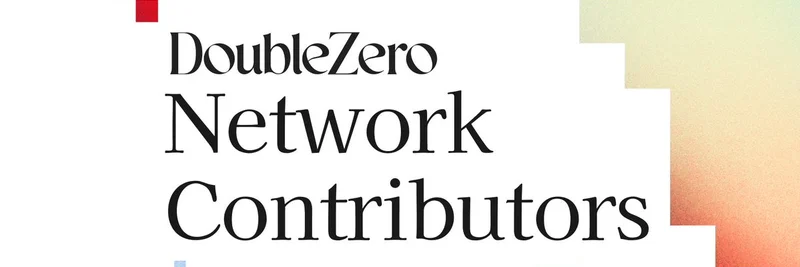In the fast-paced world of blockchain and meme tokens, speed is everything. Whether you're sniping the latest Solana meme coin launch or arbitraging across DEXs, every microsecond counts. That's why the recent announcements from DoubleZero are turning heads in the crypto community. In a thread on X, the team unveiled their growing list of network contributors, bringing high-frequency trading (HFT) expertise to public blockchains. This could supercharge meme token ecosystems by slashing latency and boosting bandwidth.
Understanding DoubleZero: The N1 Layer for Blockchain
DoubleZero isn't just another layer on the blockchain stack—it's pioneering what they call the "N1" layer, a physical network infrastructure optimized for distributed systems. At its core, DoubleZero fuses underutilized fiber links from various providers into a synchronized global network. This setup eliminates jitter (those annoying delays in data transmission), increases bandwidth, and reduces latency, making it ideal for real-time applications like meme token trading bots or DeFi protocols.
For blockchain practitioners, especially those diving into Solana's vibrant meme token scene, this means faster block times and more reliable transactions. Imagine launching a meme coin without worrying about network congestion slowing down your hype train. DoubleZero draws from the same tech that powers Wall Street's HFT firms, now tailored for decentralized networks. Learn more on their official site.
Jump Trading: Bringing HFT Precision to Crypto
One of the standout contributors highlighted in the thread is Jump Trading, a powerhouse in high-frequency trading with over a decade of experience in ultra-low-latency networks. As DoubleZero's first network and engineering partner, Jump is applying their battle-tested tech to blockchain.
In traditional finance, microseconds can make or break a trade. Jump's involvement aims to bring that same edge to crypto, potentially accelerating blockchain systems by years. For meme token enthusiasts, this translates to quicker executions on platforms like Pump.fun or Raydium, where front-running and MEV (max extractable value) strategies thrive on speed.
Galaxy Digital: Expanding Fiber Reach for Solana Validators
Hot on the heels of Jump's announcement, DoubleZero welcomed Galaxy Digital as a network contributor and backer. As one of the largest Solana validators and a leader in blockchain infrastructure, Galaxy is deploying dedicated fiber connections across key regions.
This partnership underscores a shared vision: optimizing blockchains down to the physical layer for real-time apps. Galaxy's expertise in low-latency systems will help expand DoubleZero's reach, making it a boon for Solana-based meme tokens. With Solana already known for its speed and low fees—fueling hits like Dogwifhat or Bonk—DoubleZero could push it further, enabling even more innovative meme-driven DeFi and gaming experiences.
Why This Matters for Meme Tokens and Blockchain Devs
Meme tokens aren't just jokes; they're a massive part of the crypto economy, especially on Solana where community-driven projects explode overnight. But public internet bottlenecks often lead to failed transactions or high slippage during viral pumps. DoubleZero's contributor model introduces a novel, decentralized way to build infrastructure at scale, fusing contributions from HFT firms, telecom operators, and independents.
By reducing latency and ensuring deterministic bandwidth, this network could lower DeFi spreads, cut transaction fees, and unlock new possibilities like edge-level filtration at the physical layer. For devs building meme token tools or launchpads, it's an opportunity to create more robust, high-performance apps. Keep an eye on DoubleZero's 2Z token, which underpins the protocol's incentives—aligning users, contributors, and the community for sustainable growth.
As the blockchain space evolves, initiatives like DoubleZero remind us that true innovation happens at the intersection of hardware and software. If you're into meme tokens, Solana, or just faster crypto, this thread is a must-read. What's your take on how low-latency networks could reshape the meme meta? Drop your thoughts below!



